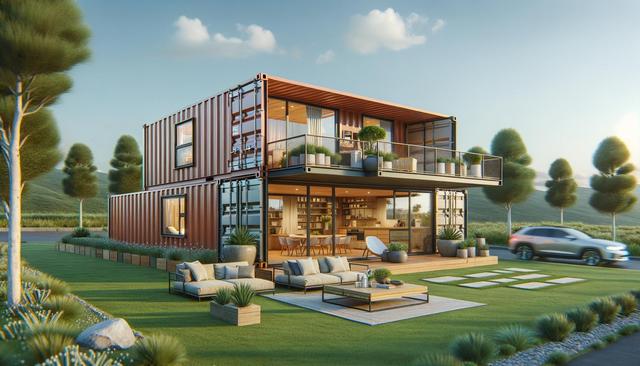What Are Shipping Container Homes?
Shipping container homes are residential structures built using steel shipping containers that were originally designed for transporting goods. These containers come in standardized sizes, typically 20 or 40 feet in length, making them modular and stackable. Their rigid steel construction provides a durable framework that can be easily transformed into living spaces. The concept has grown in popularity due to its unique blend of industrial aesthetics and practical benefits.
Using shipping containers as the primary building material allows for a quicker construction timeline compared to traditional homes. Since the containers are prefabricated, much of the modification and interior work can be done off-site. This not only reduces on-site labor but also minimizes construction waste. Additionally, many individuals are drawn to the minimalist and compact lifestyle that container homes naturally encourage.
Benefits of Container Living
There are several advantages to choosing a shipping container home, ranging from affordability to environmental impact. One of the primary benefits is the potential for cost savings. Repurposing containers is often less expensive than building a conventional house, especially when labor and materials are considered. Moreover, the modular nature of containers allows for flexible design options.
Some notable benefits include:
- Eco-friendly potential: Reusing existing containers reduces the demand for traditional building materials.
- Mobility: Smaller container homes can be relocated if needed.
- Durability: Steel containers are built to withstand harsh weather and heavy loads.
- Speed of construction: Many builds can be completed faster than traditional homes.
These homes also offer an opportunity for creative interior design, as their compact size often requires clever space-saving solutions and multifunctional furniture. With the right insulation and ventilation, they can be made comfortable for various climates.
Design Considerations and Customization
Designing a shipping container home requires careful planning to maximize space and ensure livability. While the container provides a strong structural shell, it must be modified to include windows, doors, insulation, plumbing, and electrical systems. The interior layout must be efficient to make the most of the limited square footage available in each container.
Many homeowners choose to combine multiple containers to create larger living areas. This can include stacking containers to form multi-story homes or connecting units side-by-side to expand horizontal space. Some common design features include:
- Open-concept living areas to reduce the feeling of confinement
- Lofted sleeping spaces to free up ground-level room
- Sliding doors and large windows for natural light and ventilation
Materials used for interior finishes can greatly affect the comfort and appearance of the home. Wood paneling, drywall, and energy-efficient windows are popular choices that improve insulation and aesthetics. Additionally, solar panels and rainwater collection systems are often added to enhance sustainability.
Legal and Zoning Considerations
Before building a shipping container home, it’s essential to understand the legal and zoning regulations in your area. These homes are still considered unconventional in many regions, which means they may not be covered by existing building codes. It’s important to work with local authorities and possibly hire an architect or contractor familiar with container construction to ensure compliance.
Typical considerations include:
- Obtaining proper permits and inspections
- Ensuring the land is zoned for residential use
- Meeting local building codes, especially for insulation and structural integrity
- Addressing transportation and site preparation needs
In some cases, communities or municipalities may have restrictions on alternative housing types. However, as the popularity of these homes increases, more areas are adapting their regulations to accommodate them.
Is a Container Home Right for You?
Shipping container homes offer a unique lifestyle that may not suit everyone. They are particularly appealing to individuals seeking minimalist living, sustainable practices, or innovative architecture. However, they do come with challenges, such as limited space and potential regulatory hurdles. It’s important to assess your housing needs, budget, and personal preferences before deciding if container living is the right fit.
These homes are well-suited for:
- First-time homeowners looking for a more affordable option
- Environmentally conscious individuals
- People interested in off-grid or tiny home living
- Those seeking a customizable, modular housing solution
Ultimately, the decision to build or buy a shipping container home should be made after thorough research and planning. While they offer impressive advantages, they also require a level of commitment and adaptability. Consulting with professionals and viewing existing container homes can provide valuable insights into what to expect.
Conclusion
Shipping container homes present an innovative and sustainable approach to housing that appeals to a wide range of people. Whether you’re drawn by the ecological benefits, affordability, or unique design possibilities, these homes offer a compelling alternative to traditional construction. With careful planning and attention to detail, a container home can be a comfortable, functional, and stylish living space that reflects modern values and lifestyles.




Leave a Reply